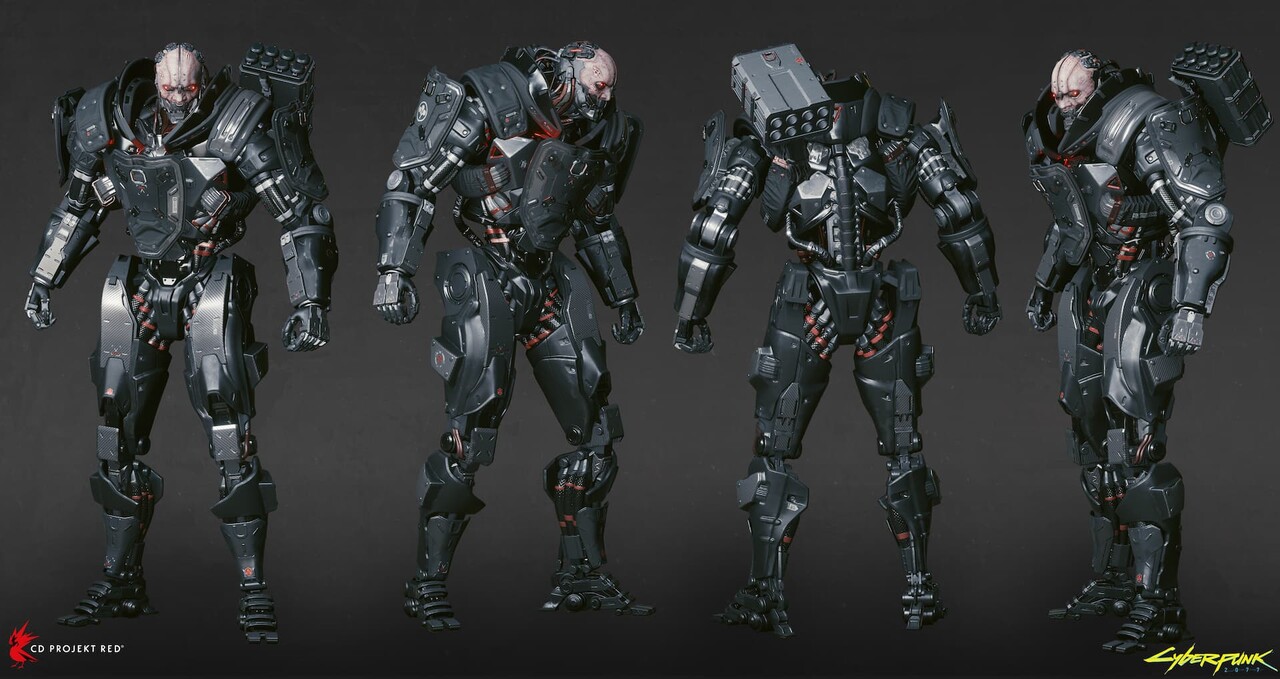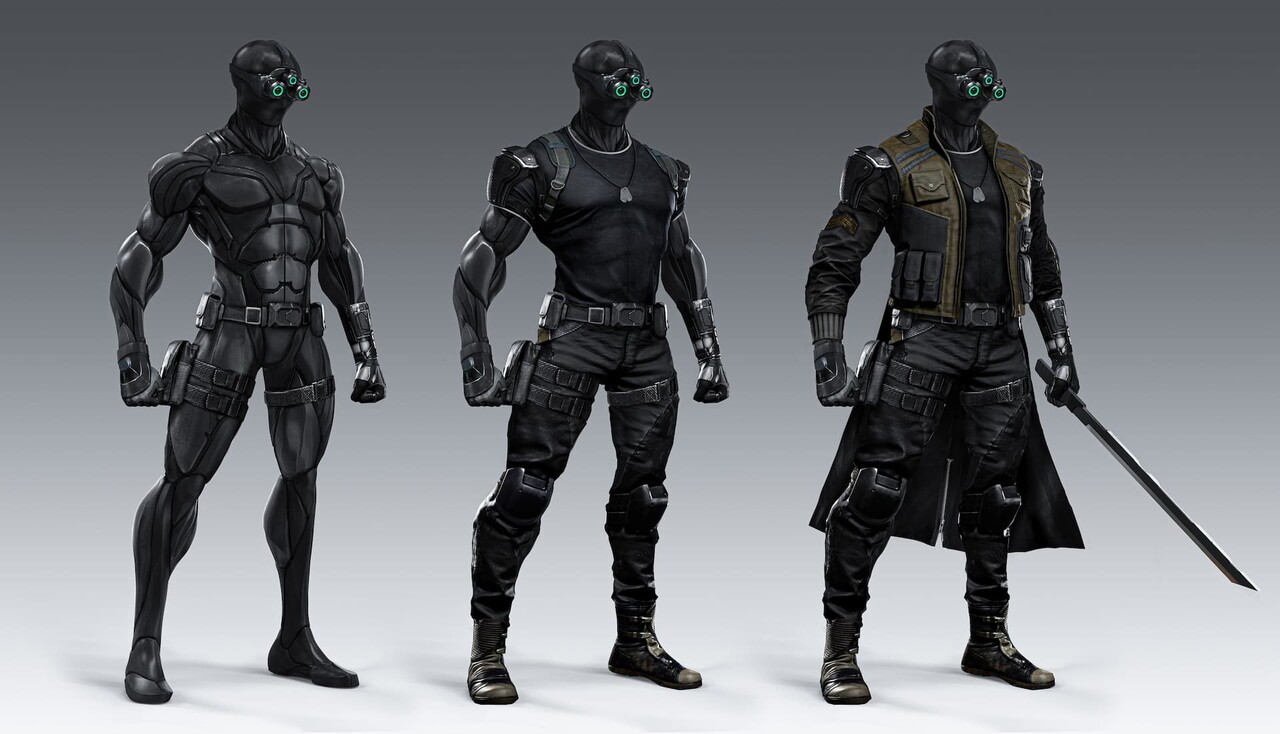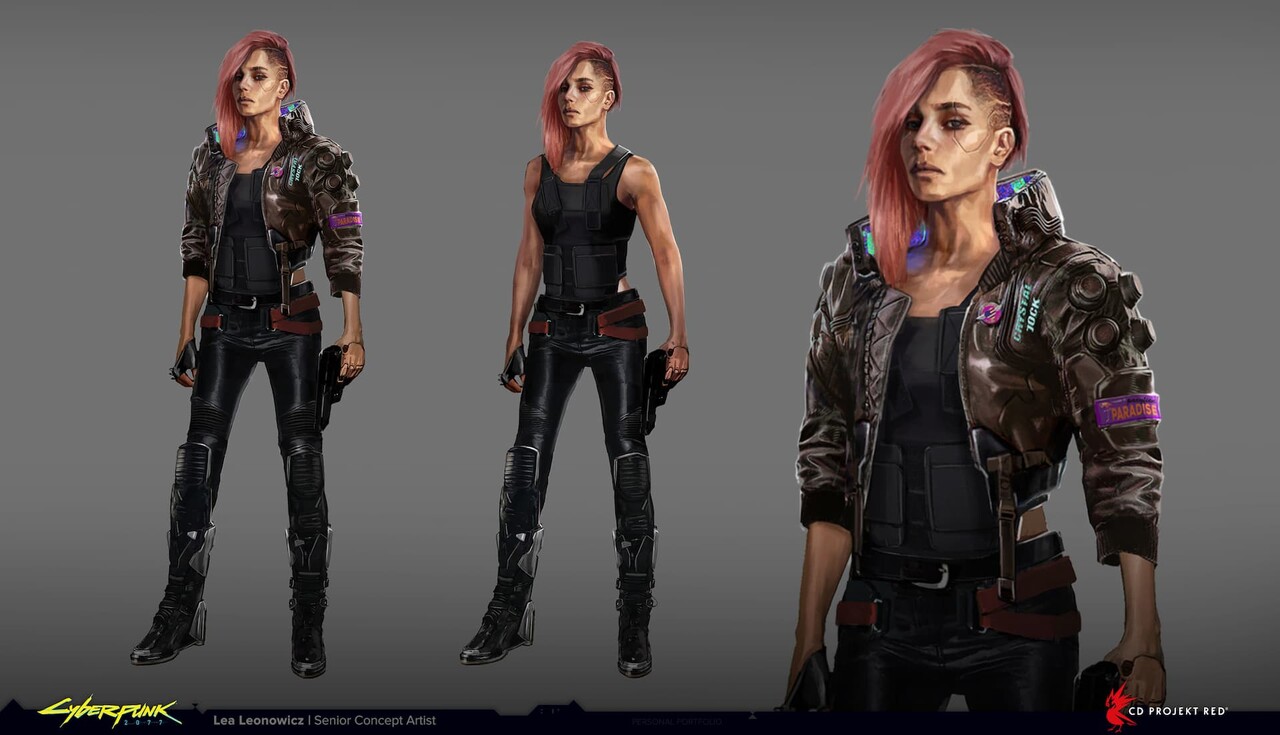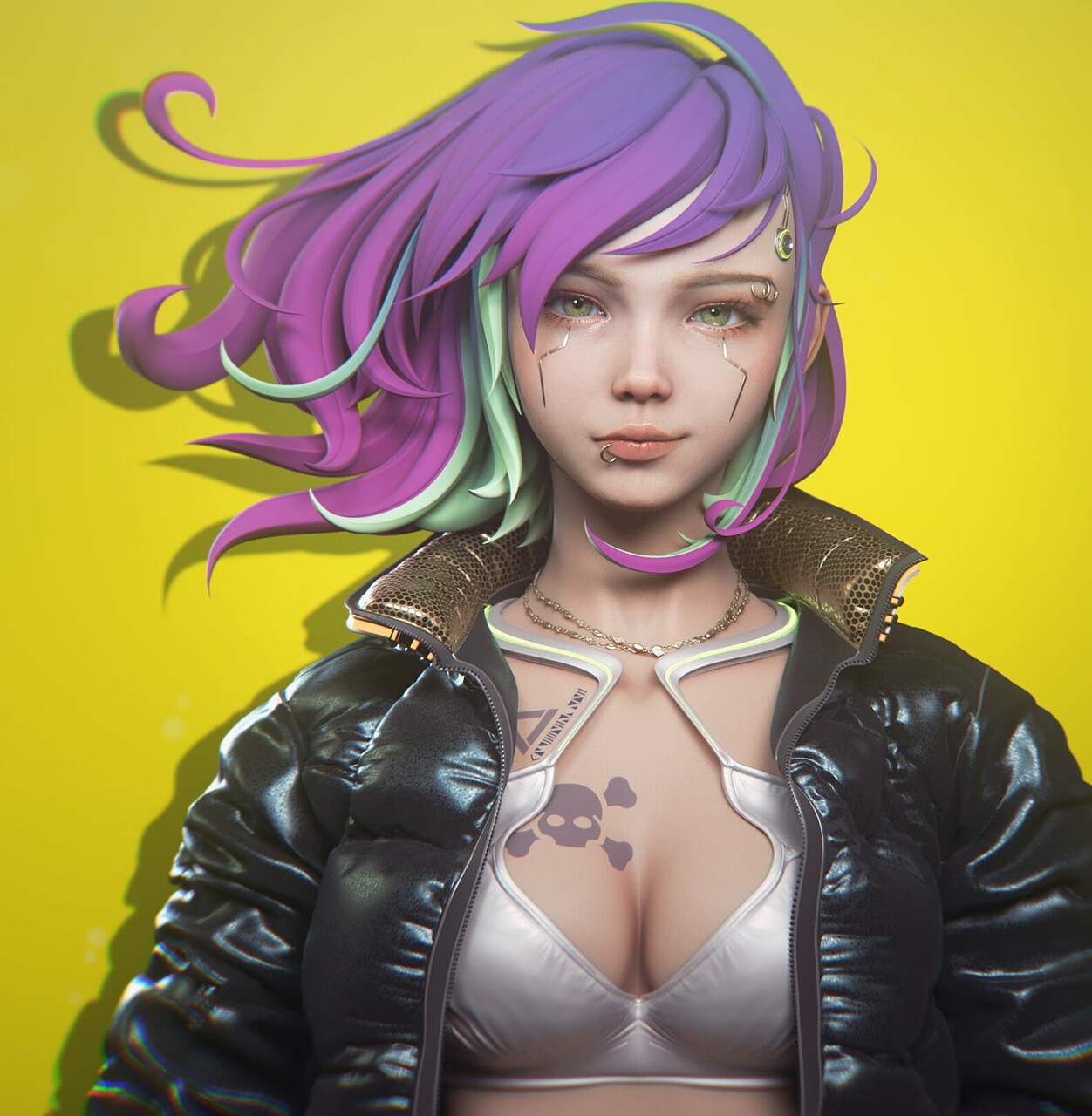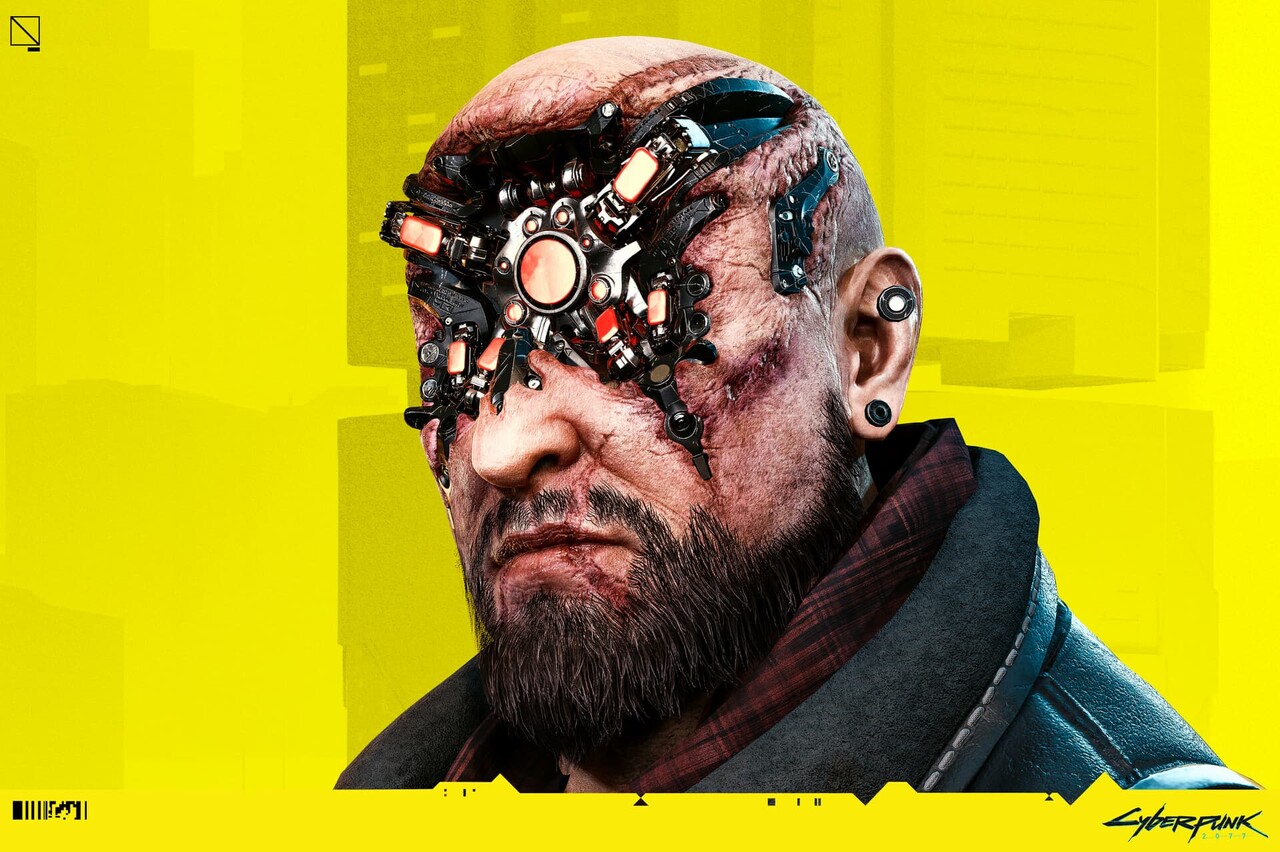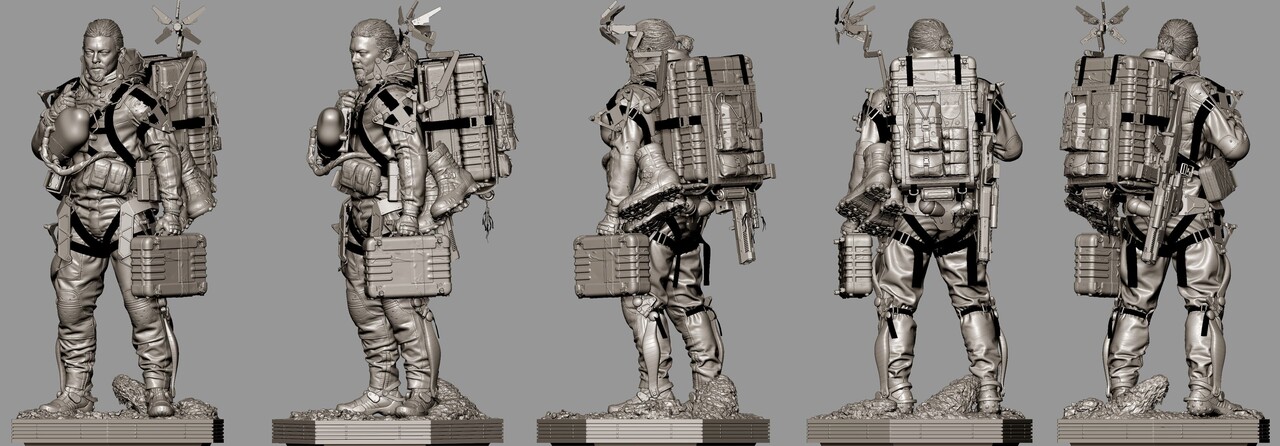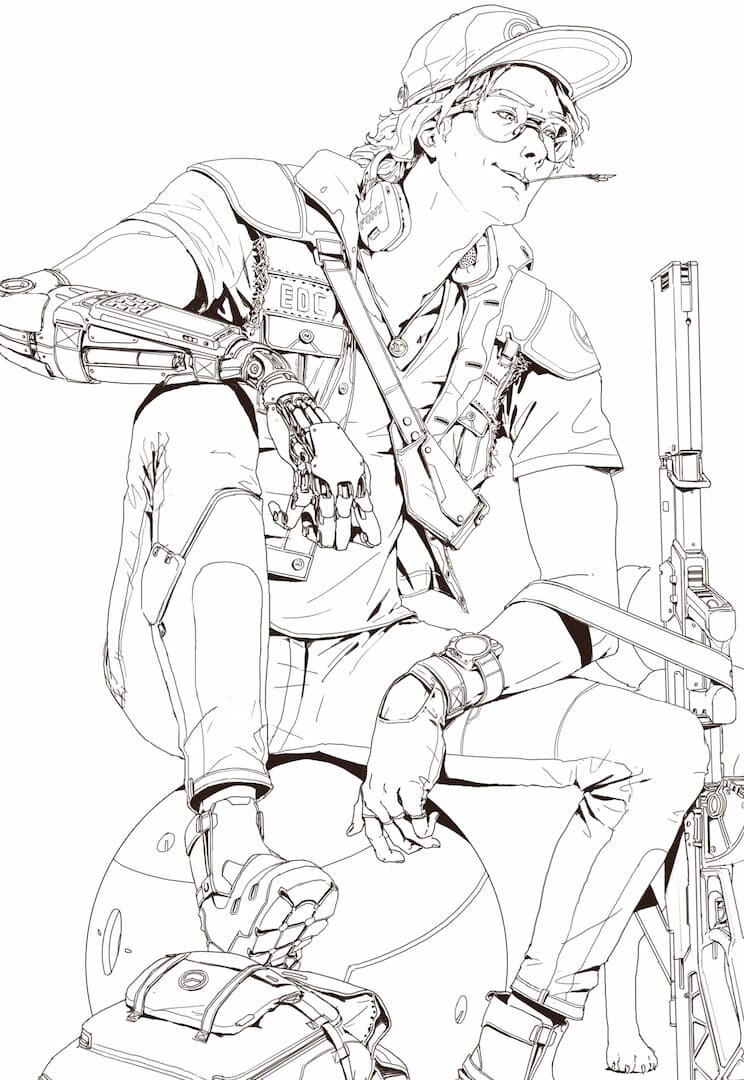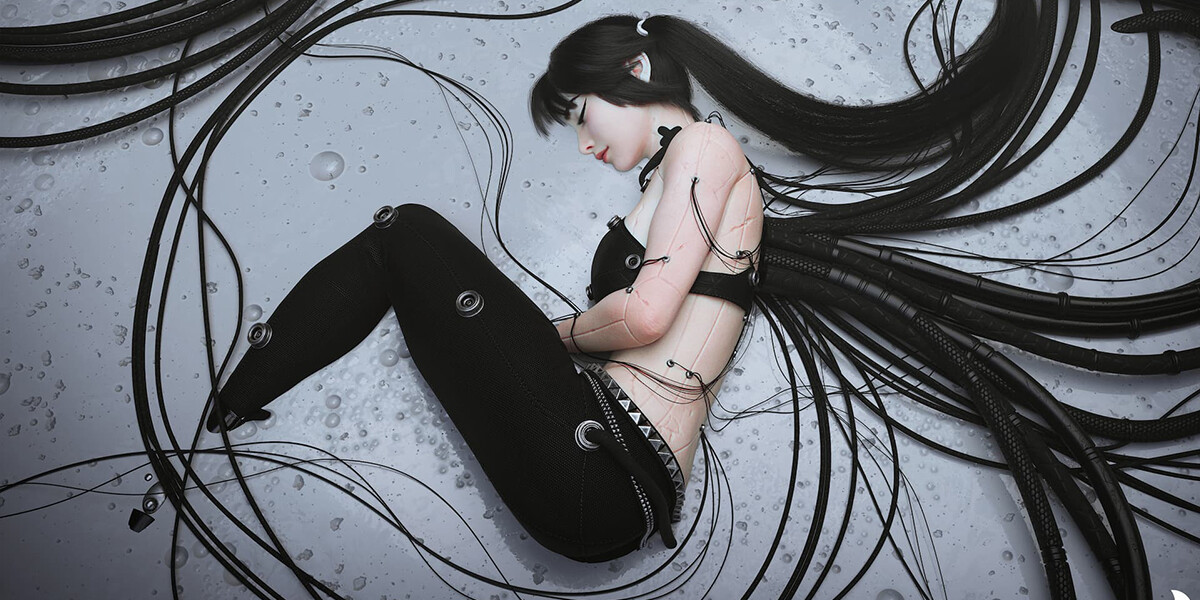Introduction: The Rise of Cyberpunk Character Art
Cyberpunk character art has become a defining visual style in contemporary video game design. Originating in the 1980s, Cyberpunk portrays futuristic dystopian worlds dominated by technology, neon aesthetics, and edgy fashion. Today, this genre extends beyond mere visuals, becoming a storytelling medium that explores themes like dystopia, transhumanism, and socio-economic disparity.
This guide offers game developers, 3D artists, and gaming enthusiasts practical insights into creating authentic and captivating cyberpunk characters.
Artwork by Grzegorz Chojnacki - Principal Character Artist @ CD Projekt Red
Key Elements of a Cyberpunk Character
1. Futuristic Setting
Cyberpunk characters inhabit technologically advanced, neon-lit urban landscapes. The environment heavily influences their appearance, reflected through attire, gear, and cybernetic enhancements.
2. High-Tech Augmentations
Common features include mechanical limbs, neural implants, and cybernetic eyes—symbols of humanity’s fusion with technology, embodying transhumanist ideals.
3. Distinctive Fashion
Fashion combines punk, gothic, streetwear, and Japanese influences, featuring leather, neon highlights, metallic accessories, vibrant hair colors, and intricate tattoos.
4. Social Commentary
Cyberpunk characters represent deeper social themes, including corporate control, loss of privacy, wealth disparity, and societal decay.
5. Anti-Hero Archetypes
Characters often exist on society’s margins, challenging oppressive systems. These flawed, morally complex figures make compelling protagonists.
Why Cyberpunk Character Art Matters
Cyberpunk character art significantly contributes to a game’s atmosphere, narrative depth, thematic exploration, and player engagement:
- Atmospheric Depth: Detailed designs immerse players, using visual cues to depict the world’s socio-economic context.
- Narrative Drive: Characters visually communicate their roles, backstories, and motivations, directly influencing plot development.
- Thematic Representation: Character art conveys cyberpunk’s core themes, effectively representing technological and societal struggles.
- Player Engagement: Unique, relatable designs foster emotional connections and enhance the gaming experience.
Creating a Unique Cyberpunk Character: Tips and Techniques
1. Develop a Strong Concept
Define your character’s story, role, motivations, and personality clearly before starting the visual design.
2. Embrace Cyberpunk Aesthetics
Utilize futuristic clothing, augmentations, and neon colors creatively, avoiding clichés and emphasizing originality.
3. Visual Storytelling
Every design element should narrate the character’s story—whether it's scars, tattoos, or augmentations indicating past experiences or affiliations.
4. Balance Tradition and Innovation
Maintain recognizable cyberpunk elements while innovating to create fresh, distinctive designs.
5. Iterative Design
Continually refine your design through sketches, feedback, and 3D modeling software for optimal results.
Examples of Excellent Cyberpunk Character Art
1 - V from "Cyberpunk 2077"
First Sketches of V Male Character - Artwork by Lea Leonowicz
Arguably the most well-known cyberpunk character in recent years, V is the player’s avatar in CD Projekt Red’s massive RPG. Players can customize V’s appearance extensively, including cybernetic enhancements, tattoos, clothing, and hairstyle. Despite the varied designs, V retains a distinctly cyberpunk aesthetic, embodying the genre’s fusion of high-tech and low-life.
2 - Adam Jensen from "Deus Ex: Human Revolution"
Adam Jensen - Artwork by Laura Gallagher
Adam Jensen is a standout example of cyberpunk character art, featuring biomechanical augmentations that make him more machine than man. His distinctive sunglasses and trench coat have become iconic within the genre, and his design reflects his character’s struggle with his own humanity.
3 - Major Motoko Kusanagi from "Ghost in the Shell: Stand Alone Complex - First Assault Online"
Based on the anime and manga series, Major Motoko Kusanagi’s character design in the game successfully captures the cyberpunk aesthetic. Her design features a full-body prosthetic, which is both sleek and functional, reflecting the world’s advanced technology.
4 - Royce from "Cyberpunk 2077"
Royce - Artwork by Marcin Klicki
Royce, the leader of the Maelstrom gang, is another example of compelling cyberpunk character design. His body is heavily modified with cybernetics to the point where he’s barely recognizable as human – a commentary on the extremes of augmentation in the genre.
5 - Johnny Silverhand from "Cyberpunk 2077"
Johnny Silverhand - Artwork by Marcin Blaszczak
Played by Keanu Reeves, Johnny Silverhand is a digital ghost and former rockstar. His design, complete with a robotic arm and rockstar attire, embodies the punk aspect of the genre.
6 - Sam Porter Bridges from "Death Stranding"
Sam Porter Bridges - Artwork by Bruno zorzi
While not strictly a cyberpunk game, “Death Stranding” incorporates many cyberpunk aesthetics. Sam Porter Bridges, played by Norman Reedus, is a courier in a post-apocalyptic world. His character design, particularly his high-tech equipment and clothing, carries a strong cyberpunk vibe.
These examples highlight the versatility and creativity in cyberpunk character art, demonstrating how designers can use technology, fashion, and personal history to craft unique and memorable characters.
Techniques for Creating Cyberpunk Character Art
- Concept Sketching: Rough sketches exploring diverse design possibilities.
- 3D Modeling: Utilize software like ZBrush, Maya, or Blender to craft detailed cybernetic enhancements and attire.
- Texturing and Shading: Apply realistic materials using Substance Painter to achieve authentic cyberpunk aesthetics.
- Rigging and Animation: Create realistic movement, particularly challenging with augmented cybernetic bodies.
- Lighting and Rendering: Employ engines like Unreal, Unity, Arnold, or V-Ray for atmospheric visuals emphasizing neon lighting and reflections.
Learning Resources for Cyberpunk Character Art
Books
- “The Art of Cyberpunk 2077”: This official book gives a deep insight into the process of creating the unique art of the widely acclaimed game, “Cyberpunk 2077”. It’s an invaluable resource for understanding the intricate details involved in cyberpunk character design.
- “Beginner’s Guide to Digital Painting in Photoshop: Sci-fi and Fantasy”: While not cyberpunk-specific, this book covers key digital art skills that can be applied to the genre.
Online Tutorials
- ArtStation Learning: Many professional artists share process breakdowns and tutorials on this platform. For instance, you can find specific cyberpunk-themed character art tutorials.
- YouTube: Channels like FZD School of Design or Sketchy Trav, often share useful tips and tutorials applicable to cyberpunk art.
Online Courses
- Udemy hosts a wide range of digital art courses, including “Character Art School: Complete Character Drawing” which provides a solid foundation for creating characters in any style.
- Domestika: For learn a simple approach to drawing memorable characters, you might check out “Introduction to Design of Characters for Animation and Video Games“.
Forums and Communities
- Reddit: Subreddits like r/learnart and r/cyberpunk offer plenty of advice and feedback opportunities for emerging artists.
- Discord: Many art-related servers exist where you can interact with like-minded artists, share your work, and get critiques.
Learn Software
- Learn software like ZBrush, Substance Painter, or Blender. They often offer in-depth tutorials on their official websites.
Remember, mastering cyberpunk character art takes time and practice, but with these resources at your disposal, you’ll be well-equipped to dive into this exciting genre.
Conclusion: Embrace the Art of Cyberpunk
Cyberpunk character art is a dynamic and powerful form of creative expression, merging visual aesthetics, storytelling depth, and thematic complexity. Understanding and implementing the key aspects outlined here can significantly elevate your artwork and enhance player engagement.
Explore more inspiring examples and high-quality assets, including HDRi Maps, PBR Textures, and Game Props, by visiting my Artstation Store or my official website at 3dskillup.art.
Embark on your creative journey, and craft compelling cyberpunk characters that resonate with audiences and enrich your gaming worlds!
